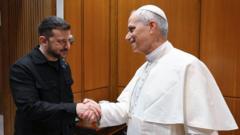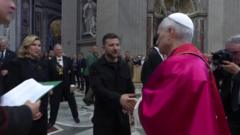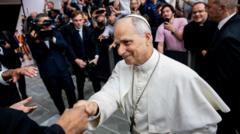The tradition of using colored smoke to indicate the results of papal elections is steeped in history, dating back to the early 19th century. When the cardinals of the Vatican enter the Sistine Chapel for a conclave, all eyes are fixed on the chimney that will either emit white smoke, signaling the election of a new pope, or black smoke, indicating that a consensus has not been reached. This practice began around 1823, as noted by Frederic J. Baumgartner in "Behind Locked Doors," a detailed history of these ecclesiastical elections. Prior to this method, while ballots were burned after each round of voting, there was no direct communication with the outside world regarding their outcomes.
The Vatican's Smoke Signal Tradition: A Peek Inside Papal Elections

The Vatican's Smoke Signal Tradition: A Peek Inside Papal Elections
As the cardinals lock themselves away to select a new pope, a chimney at the Vatican becomes a key focal point for the world, signaling the outcome of their votes with colored smoke.
The signaling smoke comes from burning the votes alongside any notes the cardinals may have made, placed into a cast-iron stove following each voting round. The process involves a series of rounds, beginning with one on the first day, followed by four each day until a pope is decided upon. The burning of ballots typically occurs after two voting rounds unless a pope emerges victorious.
Historically, the method for producing the white smoke has evolved. In the past, wet straw was added to the stove to create the desired color, a technique that did not always guarantee clarity. For instance, during the 1958 conclave, confusion arose when white smoke was mistakenly thought to signal a pope’s selection twice on the second day of voting, while in reality, no decision had been made.
The anticipation builds outside the chapel as the world awaits the outcome, with the chimney's smoke acting as the lone herald of a new papacy, carrying significant historical weight and communal excitement across the globe.
Historically, the method for producing the white smoke has evolved. In the past, wet straw was added to the stove to create the desired color, a technique that did not always guarantee clarity. For instance, during the 1958 conclave, confusion arose when white smoke was mistakenly thought to signal a pope’s selection twice on the second day of voting, while in reality, no decision had been made.
The anticipation builds outside the chapel as the world awaits the outcome, with the chimney's smoke acting as the lone herald of a new papacy, carrying significant historical weight and communal excitement across the globe.





















